Titleist TSR drivers

Gear: Titleist TSR2, TSR3, TSR4 drivers
Price: $599 each with Project X HZRDUS Red CB, Project X HZRDUS Black 4G, Mitsubishi Tensei AV Blue or Mitsubishi Tensei 1K Black shaft and Golf Pride Tour Velvet 360 grip.
Available: September 23
Who it’s for: Golfers who want a classic-looking driver that has an aerodynamic shape and model options that include a point-and-shoot bomber, a club with draw and fade adjustability and a low-spin club for players looking for a more-piercing shot.
The Skinny: At address, the TSR drivers are classic Titleist, but each club is designed to meet the needs of different players while delivering more ball speed. The TSR2 maximizes forgiveness, the TSR3 has a moveable weight to encourage different ball flights and the TSR4 has two adjustable weights to increase or decrease the spin rate and launch angle.
The Deep Dive: Six years ago Titleist went on a quest for speed. Best known as the maker of the Pro V1 and Pro V1x balls, Titleist had plenty of drivers in play on the PGA Tour and LPGA, and it sold a lot of clubs to recreational golfers too, but they did not have a reputation for producing the fastest ball speeds off the tee. Titleist tried to change that perception starting with the TS series and then the TSi family of drivers.
Then, a day after Matt Fitzpatrick used a Titleist TSi3 driver to win the 2022 U.S. Open, the company brought the TSR series to the PGA Tour for the first time at the Travelers Championship.
TS has stood for “Titleist Speed,” and the added R in the new lineup stands for redefined. With the TSR2, TSR3 and TSR4, the company’s engineers have tried to make clubs that move faster through the air and that feature a larger sweetspot, so golfers can not only get better performance on center-struck shots but on mis-hits too. There are several similarities between the clubs, but they are each designed for different types of golfers.
TSR2: Maximum speed and stability

Titleist TSR driver. (David Dusek/Golfweek)
Specs: 460-cubic-centimeter volume with an all-titanium body and head. Available in 8-, 9-, 10- and 11-degree versions. 45.5 inches in length with a 58.5-degree lie angle
This model has undergone the most significant change compared to the club it replaces, the TSi2. The TSR2 has a different shape because Titleist heard, from both tour players and recreational golfers alike, that TSi2 looked too big in the address position, and its straight topline gave the appearance that the face pointed left. They also heard that players thought the TSi2 seemed slower than the TSi3.
By making the toe area more rounded, Titleist designers created a more-open shape without creating a directional bias or making the club shorter from heel to toe. It also helps to give the 460-cubic-centimeter TSR2 more of a pear-shaped appearance at address, which many players like, but it is still the largest driver from face to back.
To make the club faster, Titleist redesigned the back of the head. Now, instead of the sole and crown meeting on a seam in the back, it overhangs the bottom of the club slightly and then goes downward to meet the sole. It’s a subtle change that some players will not notice, but along with the smoother sole design, it helps to improve the way air flows over and around the head on the downswing.
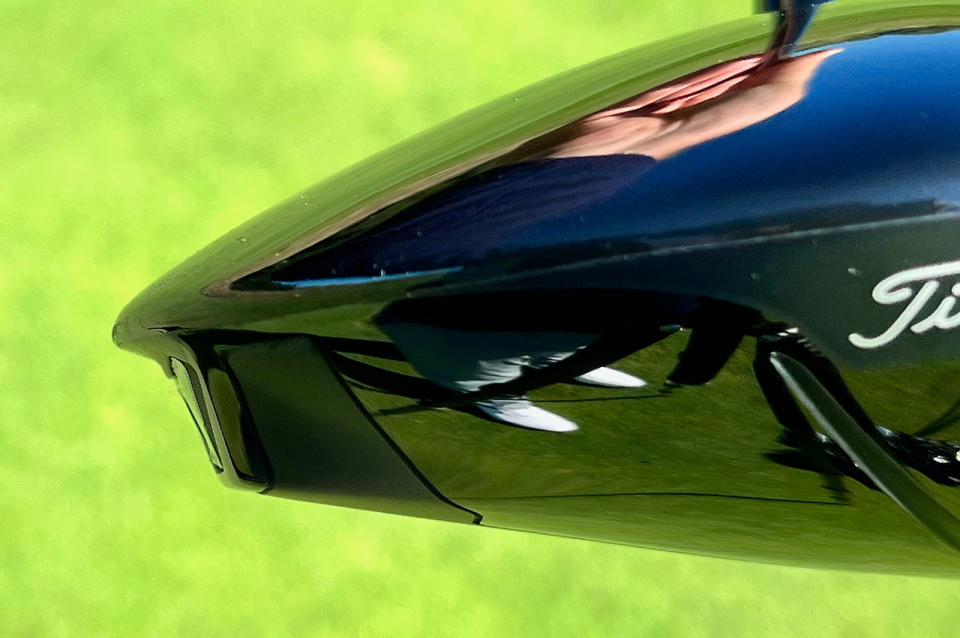
The crown of the TSR2 overhangs the sole for better aerodynamics. (David Dusek/Golfweek)
Titleist has given the TSR2 an updated variable-thickness face design to use the more aerodynamic shape better. It starts as a very thin piece, but then one layer of titanium after another is strategically added to different locations. The result is that shots hit in the center are rewarded with the maximum ball speed, but with an enlarged sweet spot, balls struck across a larger portion of the hitting area retain ball speed more effectively.
Finally, to lower and pull the center of gravity back, Titleist shifted the 9-gram weight in the back of the sole to under the overhanging area of the crown. The weight is adjustable for fitters, so the swing weight can be adjusted easily, but shifting mass to the back of the head helps the TSR2 resist twisting on off-center hits more effectively and increase the launch angle for more carry distance.

The TSR2 has a more-rounded toe so in the address position, it does not appear to point left. (David Dusek/Golfweek)
However, the center of gravity is more forward (2 millimeters) than with the TSi2. According to Titleist’s research, shifting the weight slightly forward should help golfers swing the club faster, deliver more ball speed and retain forgiveness. Of the three TSR drivers, this club still has the highest moment of inertia.
TSR3: Precision tuning

Titleist TSR3 driver. (David Dusek/Golfweek)
Specs: 460-cubic-centimeter volume with all-titanium body and head with an 8-gram adjustable sole weight. Available in 8-, 9- and 10-degree versions, and 11-degree heads are available through custom order. 45.5 inches in length with a 58.5-degree lie angle
The TSi3 was the most popular Titleist driver on the PGA Tour last season, so the challenge with upgrading was to improve it without deviating radically from what players liked.
Compared to the TSi3 it replaces in Titleist’s stable, the shape and looks of the TSR3 appear nearly identical. It has a glossy black top, a pear shape and a subtle TSR chevron behind the center of the topline to help golfers position the ball in the middle of the hitting area.
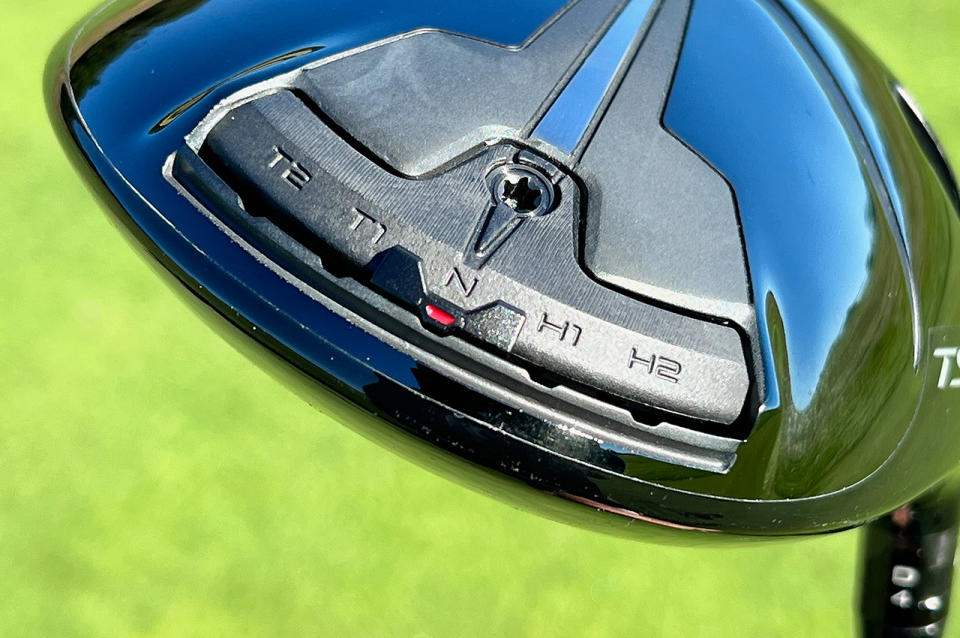
The TSR3’s five-position moveable weight allows it to have a draw or fade bias. (David Dusek/Golfweek)
The biggest feature that Titleist brought to the TSR3 driver is a face technology that you can’t see called Speed Ring. Like other drivers, Titleist welds the titanium face insert to the chassis and then smooths the welds around the top, bottom and sides of the hitting area, creating a rigid boundary. But in the TSR3, the company added a thicker, more-rigid circular area on the inside-facing portion of the face. Ordinarily, brands make the center of a face slightly thicker and the perimeter of the hitting area thinner to broaden the sweet spot, but the TSR3 players tend to be more consistent and hit the ball in the middle of the face more often.
According to Titleist, by creating a stiff ring in the face, the middle of the face can flex more efficiently and generate higher ball speeds on center strikes, while the outer portions of the face have the same ball-speed retention as the TSi3. In other words, Titleist said well-struck shots will be even faster, but off-center hits won’t be penalized more.
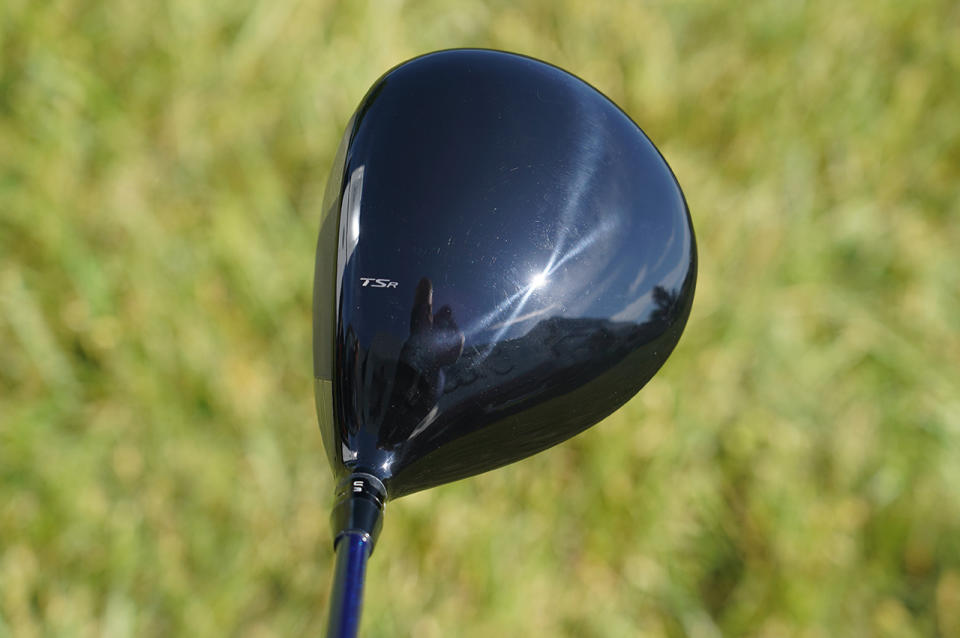
The Titleist TSR3 driver has a classic pear shape. (David Dusek/Golfweek)
On the back of the TSR3, Titleist designed a five-position moveable weight system that allows players and fitters to create a draw or fade bias by shifting the 8-gram weight toward the heel or toe. In the center or “Neutral” position, the TSR3 has no shot-shape bias. Fitters can also swap out the 8-gram weight for other weights to tweak the swing weight and overall weight of the club based on its length and player preferences.
TSR4: Adjustability with low spin

Titleist TSR4 driver (David Dusek/Golfweek)
Specs: All-titanium body and head with an adjustable hosel for loft and lie angles and two adjustable weights. Available in 8-, 9- and 10-degree versions.
Like the TSi4 driver it replaces, the TSR4 is designed to be a spin-killer for players who tend to overspin shots and balloon drives or who come over the top and hit severe slice shots.
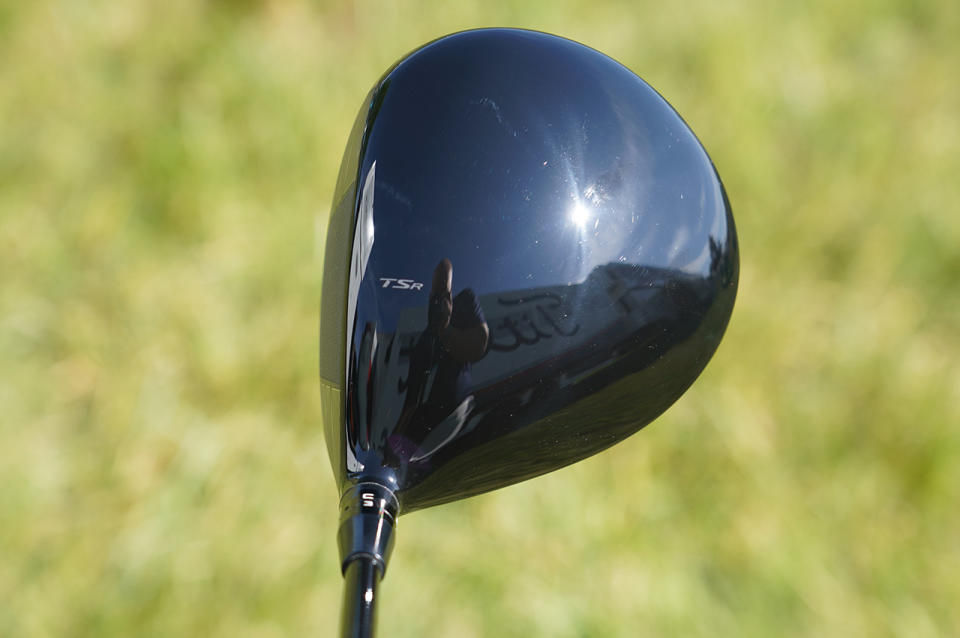
The TSR4 has the most compact head (430cc) of any TSR driver. (David Dusek/Golfweek)
The TSR4 has the smallest head in the TSR driver family – 430 cubic centimeters – and the tallest face, but spin adjustability really sets it apart from the other TSR drivers. The club comes standard with 11-gram and 3-gram weights that can each fit in forward and back positions. With the heavier weight in the sole port and the 3-gram weight in the back, the TSR4 produces 250-300 rpm less spin and the lowest launch conditions. However, if that is too low, golfers and fitters can shift the 11-gram weight to the back and put the 3-gram weight in the forward spot, which increases the spin rate and ball flight but still keeps it lower than the flight produced by the TSR3. Effectively, it’s a TSR3.5.
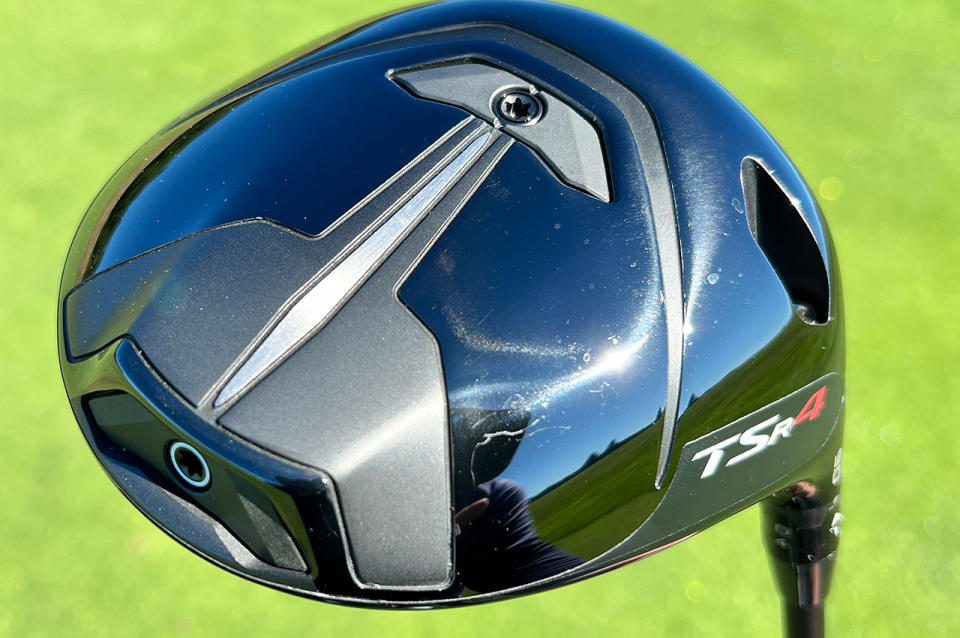
The TSR4’s weight allow players and fitters to adjust the ball flight and spin rates up or down. (David Dusek/Golfweek)
Like the TSR2, the TSR4 has a multi-player variable thickness face to help increase ball speed.

